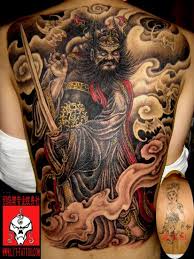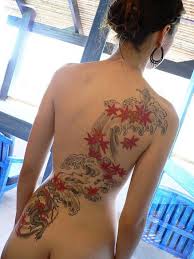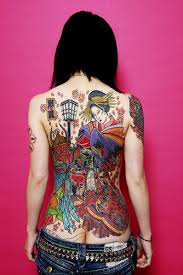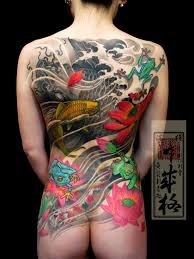Harajuku is the common name for the area around Harajuku Station on the Yamanote Line in the Shibuya ward of Tokyo, Japan.
Every Sunday, young people dressed in a variety of styles including gothic lolita, visual kei, and decora, as well as cosplayers spend the day in Harajuku socializing. The fashion styles of these youths rarely conform to one particular style and are usually a mesh of many. Most young people gather on Jingu Bridge, which is a pedestrian bridge that connects Harajuku to the neighboring Meiji Shrine area.
Harajuku is also a fashion capital of the world, renowned for its unique street fashion. Harajuku street style is promoted in Japanese and international publications such as Kera, Tune, Gothic & Lolita Bible and Fruits. Many prominent designers and fashion ideas have sprung from Harajuku and incorporated themselves into other fashions throughout the world.
Harajuku is also a large shopping district that includes international brands, its own brands, and shops selling clothes young people can afford.
Location
Harajuku is an area between Shinjuku and Shibuya. Local landmarks include the headquarters of NHK, Meiji Shrine, and Yoyogi Park.
The area has two main shopping streets, Omotesandō and Takeshita Street (Takeshita-dōri). The latter caters to youth fashions and has many small stores selling Gothic Lolita, visual kei, rockabilly, hip-hop, and punk outfits, in addition to fast food outlets and so forth.
Omotesandō has recently seen a rise in openings of up-scale fashion shops such as Louis Vuitton, Chanel, and Prada. The avenue is sometimes referred to as "Tokyo's Champs-Élysées". Until 2004, one side of the avenue was occupied by the Dōjunkai Aoyama apāto, Bauhaus-inspired apartments built in 1927 after the 1923 Kantō earthquake. In 2006 the buildings were controversially destroyed by Mori Building and replaced with the "Omotesando Hills" shopping mall, designed by Tadao Ando. The area known as "Ura-Hara", back streets of Harajuku, is a center of Japanese fashion for younger people—brands such as A Bathing Ape and Undercover have shops in the area.
History
Harajuku as it is now traces its roots to the end of World War II. U.S. soldiers and their families began to occupy the area known as Harajuku. It became an area where curious young people flocked to experience a different culture.
In 1958, Central Apartments were built in the area and were quickly occupied by fashion designers, models, and photographers. In 1964, when the Summer Olympics came to Tokyo the Harajuku area was further developed, and the idea of “Harajuku” slowly began to take a more concrete shape.
After the Olympics the young people who hung out in the area, frequently referred to as the Harajuku-zoku, or the Harajuku tribe, began to develop a distinct culture and style unique to different groups and the area. From this distinct style grew the culture of Harajuku as a gathering ground for youths and as a fashion mecca.
Styles
The term "Harajuku Girls" has been used by English-language media to describe teenagers dressed in any fashion style who are in the area of Harajuku. This fashion infuses multiple looks and styles to create a unique form of dress. The cyber-punk look takes its influence from gothic fashion and incorporates neon and metallic colors. However, it isn't as popular as it was in the 1990s.
Punk style in Harajuku is more of a fashion than a statement. Its fashion mainly consists of dark colors, plaid, chains, and zippers. Punk style is also one of the more gender-neutral fashions in Harajuku.
Ganguro is a style that symbolizes the average American teenager. The term translates to ‘black-faced’. The basic look is what Westerners would call a ‘California girl’, with bleached hair, dark skin, fake eyelashes and nails. No one really is sure how Ganguro came to be. Many assume it originated in the early 1990s, when singer and performer Janet Jackson was popular.
Cosplay is more of a costume-based style. A cosplay enthusiast will usually dress as a fictional or iconic character from a band, game, movie, anime, or manga.
Ura-Hara is another section of Harajuku, which caters to a mostly male population interested in a hip-hop, graffiti, and skater fashion and culture. Ura-Hara is seen as the opposite of Harajuku in that it’s more hidden and reserved.
In addition to Harajuku is its counterpart, known as Visual Kei. this refers to the style of bands and their fanbase. The term Visual Kei literally means a ‘visual style of music’. The melodies of the music these bands perform often resemble eighties rock, heavy metal, or techno; in some cases, the sound is a good mix of the three. The fashion began in the 1980s, when American metal bands were popular. Japanese fans loved how their idols would dress frantically and paint makeup wildly on their faces, so they began to emulate their style. This mimicking is also known is costume play, or cosplay.











No comments:
Post a Comment